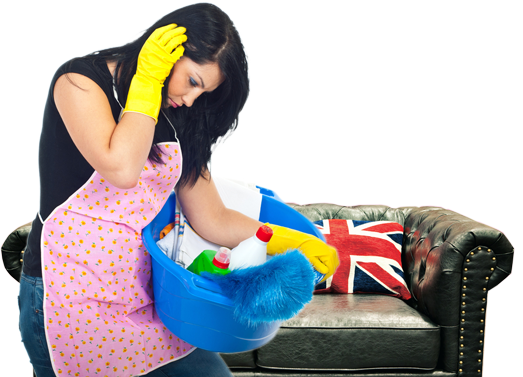Transform Your Bathroom with These Mold Prevention Tips
Posted on 16/06/2025
Transform Your Bathroom with These Mold Prevention Tips
Is your bathroom prone to persistent mildew, damp smells, or unsightly discoloration on walls, tiles, and ceilings? If so, you are not alone. Bathrooms are the ideal breeding ground for unwanted mold due to high humidity, frequent water exposure, and limited ventilation. The good news is preventing mold in your bathroom is entirely achievable with some practical strategies and ongoing maintenance. In this comprehensive guide, discover effective and *actionable mold prevention tips* that not only safeguard your family's health but also keep your bathroom looking fresh, clean, and inviting.
- Why Mold Grows in Bathrooms
- Common Signs of Bathroom Mold
- Health Risks Associated with Bathroom Mold
- Top Mold Prevention Tips for Bathrooms
- Deep Cleaning Techniques for Mold Prone Areas
- Renovation Ideas for Long-Term Mold Control
- Frequently Asked Questions on Bathroom Mold Prevention
- Final Thoughts: Transform Your Bathroom and Breathe Easy
Why Mold Grows in Bathrooms
Mold thrives in environments where there is an abundance of moisture, warmth, and organic material for it to feed upon. Unfortunately, bathrooms routinely offer all three conditions. Whenever you shower or bathe, humidity rises, and water lingers on various surfaces. Combined with poor ventilation, it's no wonder mold forms so quickly. Understanding the reasons behind bathroom mold growth is the first step toward prevention:
- High Humidity: Steam from hot water increases air moisture, especially in small, windowless bathrooms.
- Poor Air Circulation: Inadequate ventilation allows dampness to persist longer.
- Porous Surfaces: Grout, caulking, and even some wallpapers can absorb moisture, providing the perfect home for mold spores.
- Neglected Spills and Leaks: Undetected leaks or lingering puddles are a common culprit.
Common Signs of Bathroom Mold
Identifying mold early is crucial for effective mitigation. Here are the most common bathroom mold warning signs:
- Discoloration: Black, green, or brown spots forming on grout, caulk, ceilings, or walls.
- Musty Odors: Persistent damp, earthy smells often indicate hidden mold growth.
- Peeling Paint or Wallpaper: Excess moisture loosens adhesives, causing finishes to bubble and peel.
- Visible Mildew: White, fuzzy or powdery substances on bathroom surfaces.
Tip: Don't ignore subtle changes; catching mold early means easier removal and less risk to your home and health.
Health Risks Associated with Bathroom Mold
Exposure to bathroom mold is more than an aesthetic problem--it's a real health hazard. Mold releases spores into the air, which can cause mild to severe reactions, especially in sensitive individuals. Common health issues related to bathroom mold include:
- Respiratory Irritation: Sneezing, coughing, wheezing, or shortness of breath.
- Allergic Reactions: Itchy eyes, rashes, or flare-ups in people with asthma or allergies.
- Chronic Fatigue: In some cases, ongoing mold exposure may cause general malaise.
- Serious Infections: Rare but severe infections can affect those with compromised immune systems.
By mastering mold prevention strategies for your bathroom, you not only improve comfort but protect your family's health in the process.
Top Mold Prevention Tips for Bathrooms
1. Ensure Sufficient Ventilation
- Run an exhaust fan during and after showers for at least 20-30 minutes.
- Open windows whenever possible to allow fresh air exchange.
- Invest in a dehumidifier if your bathroom is particularly prone to dampness.
2. Control Moisture and Humidity
- Keep relative humidity below 60% with regular monitoring (humidity meters are inexpensive and widely available).
- Dry surfaces after use--wipe down tiles, shower walls, and mirrors.
- Hang damp towels and bathmats away from surfaces to allow them to dry fully.
3. Seal and Repair Leaks Promptly
- Regularly inspect faucets, shower heads, and under-sink plumbing for leaks or drips.
- Seal grout lines and caulking annually to prevent water intrusion.
- Replace damaged tiles immediately to avoid water seepage into walls and floors.
4. Choose Mold-Resistant Materials
- Use mold-resistant paint or specialty primers on bathroom ceilings and walls.
- Opt for mildew-resistant shower curtains and washable, quick-drying bathmats.
- Consider non-porous tiles, glass or acrylic panels for shower enclosures.
5. Maintain a Consistent Cleaning Routine
- Use a mild bleach solution or mold-killing bathroom cleaner weekly on all damp-prone surfaces.
- Focus on grout lines, window sills, behind the toilet, and especially the shower and bathtub area.
- Regularly wash towels, mats, and curtains in hot water to eliminate spores.
6. Declutter the Bathroom
- Reduce storage of personal items on bathroom surfaces--extra bottles, loofahs, and even unused decor can trap moisture and harbor mold.
- Store products in well-ventilated cabinets or shelves.
7. Invest in High-Quality Ventilation Fixtures
- Upgrade your existing bathroom fan to a higher-capacity model suited for the room size.
- Consider installing an automatic humidity-sensing fan for optimal performance.
8. Don't Overlook Hidden Trouble Spots
- Check under sinks, around windows, and behind toilets for signs of dampness or mold.
- Inspect bathroom ceiling corners--these often collect condensation.
Deep Cleaning Techniques for Mold Prone Areas
Sometimes, routine cleaning alone isn't enough--especially if you're dealing with established mold buildup. Here are step-by-step instructions for deep cleaning the most vulnerable bathroom areas:
Tiles and Grout
- Spray a solution of one part bleach to ten parts water directly onto the affected areas. Let it sit for 10-15 minutes.
- Scrub grout lines using a stiff-bristle brush or an old toothbrush.
- Rinse thoroughly, and dry with a clean towel.
- Alternative: Use natural cleaners like white vinegar or hydrogen peroxide for regular maintenance.
Bathtubs and Showers
- Remove all items, including shampoo bottles and soap dishes.
- Clean surfaces with an anti-fungal cleaner--pay extra attention to corners, shelves, and under bottles.
- Rinse, dry, and replace only clean, dry items.
Ceiling and Walls
- Wear protective gloves and a mask when handling moldy surfaces.
- Use a diluted bleach or mold remover, spraying lightly to avoid oversaturation.
- Wipe away stains and dry the area completely.
- Repaint with mold-resistant paint if stains persist.
Bathroom Renovation Ideas for Long-Term Mold Control
If you're embarking on a bathroom remodel or considering upgrades, now is the perfect time to build mold prevention into your home's foundation. Here's how:
- Install waterproof underlayment before tiling or laying flooring to prevent hidden mold.
- Choose mold-resistant drywall (often called "green board") for walls and ceilings.
- Upgrade to seamless shower enclosures that minimize grout lines and water infiltration.
- Improve slope and drainage in showers and on floors to avoid standing water.
- Use high-quality silicone caulk around tubs, sinks, and windows for lasting water resistance.
Long-term investments in bathroom upgrades can save you time, money, and headaches later by minimizing the risk of chronic mold problems.
Frequently Asked Questions on Bathroom Mold Prevention
How often should bathroom grout be sealed to prevent mold?
Experts recommend sealing grout lines at least once a year to maintain water resistance, especially in high-traffic bathrooms or areas with hard water.
Can houseplants in the bathroom cause mold?
While some plants can absorb excess humidity, overwatering or neglect can create microclimates that encourage mold on walls or the plant itself. Keep plants to a minimum and avoid standing water in pots.
Is vinegar as effective as bleach for bathroom mold removal?
Vinegar is effective against many common types of mold and is a natural, non-toxic alternative to bleach. However, for stubborn or black mold, bleach solutions may provide more immediate results.
How can I tell if mold has penetrated behind walls?
If musty odors persist, or you notice warped walls, bubbling paint, or frequent mold regrowth, you may have hidden mold. It's best to consult a professional for inspection and remediation.
Are there products that actively prevent mold growth in bathrooms?
Yes! There are mold-resistant paints, shower curtains, and even cleaning sprays designed to create a barrier against future mold growth. Investing in these products can provide an added layer of defense.
Final Thoughts: Transform Your Bathroom and Breathe Easy
A bathroom free from mold is not only more attractive--it's healthier and more comfortable for everyone in your home. Instead of tackling frequent mold outbreaks, invest in smart, preventive strategies that minimize moisture, improve ventilation, and guarantee cleanliness. By following these easy yet effective bathroom mold prevention tips, you'll be rewarded with a sparkling, inviting space that stands up to humidity and time.
Remember, proactive care is the best defense against mold in any bathroom. Make mold prevention a part of your regular routine, and enjoy a cleaner, healthier home every day.







